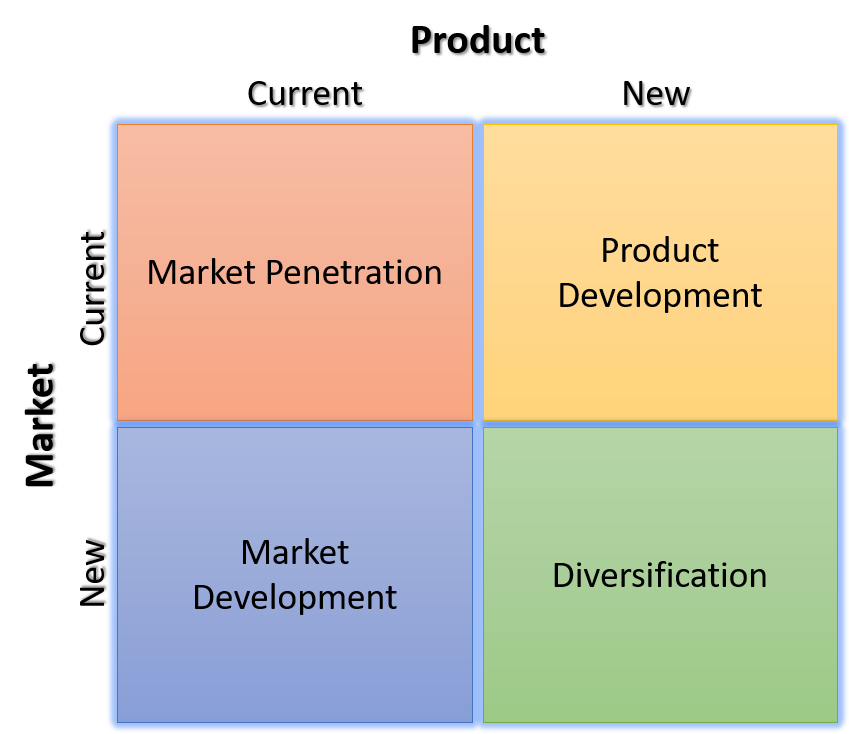Product/market strategies are detailed in nature. They address the specific market impact of a product or product line. This section examines three concepts useful in formulating such strategies: the product/market matrix, PIMS analysis, and the PLC.
Product/Market Matrix
Ansoff (1975) developed a policy/market matrix (or Ansoff matrix) which provides a useful link between products and markets. The matrix considers four combinations of product and market. Each combination suggests a growth strategy.

The organisation’s potential is determined by the combination of current and new products within current and new markets. Additionally, the element of risk must be considered. As organisations move away from existing markets and products, the potential risk factors increase.
Market Penetration: The aim is to increase sales of existing products in current markets. An aggressive marketing drive through, factors such as competitive pricing, sales promotion, or advertising, can expand the share of an existing market. Dealing with familiar customers and products is minimal risk and provides a starting point to planned growth. However, the potential for market penetration is often limited and strategic plans may need additional options to be pursued.
Market Development: Market development aims to find new markets for existing products. This could involve new geographic market (e.g. exporting), adding distribution channels or finding new market segments. For example, a manufacturer of sports clothing may try to position its products as fashion items and target a different set of retailers.
Product Development: Organisations must update their product portfolio to remain competitive. Ideally, a balanced product portfolio should exist, with established products generating funds for product development.
Diversification: This involves moving beyond existing areas of operation and actively seeking involvement in unfamiliar activities. Diversification can be related – having linkages to existing activities, or unrelated – venturing into new activities. While unrelated diversification may spread risk, it can be difficult to achieve.